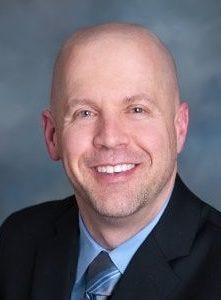Unveiling the Hidden Leadership Talents of Partners
Don't think you're a leader? Maybe you haven't looked closely enough.

Channel partners more than ever feel the pressure to develop the leadership talents of their employees.
The channel is facing a succession crisis. Many leaders of agencies and MSPs are entering retirement age and asking questions about the future of their business. But a large number of them are doing little to plan for the future. A 2021 survey by the Society for Human Resource Management found that 56% of organizations lacked a succession plan. Only 21% of respondents worked for an organization that had built a formal plan.
It’s time for partners to get serious about the future.
Anthony Palmucci, founder and director of coaching at Thinking Without Restrictions (TWR), will expound on the topic of leadership at the MSP Summit and Channel Partners Leadership Summit, Sept. 13-16, in Orlando, Florida, next month. His keynote will challenge the idea that there aren’t enough leaders available and shed light on what it looks like to develop hidden leadership talents.
Keep up with all of the speakers, exhibitors and content at the MSP Summit. The event, Sept. 13-16, in Orlando, also features the all-new Channel Partners Leadership Summit. |
Palmucci fielded questions from Channel Futures about how entrepreneurs can develop their leadership skills and build succession plans.
Channel Futures: You say some leaders are born while others are bred. What do you mean by that?

Thinking Without Restrictions’ Anthony Palmucci
Anthony Palmucci: The most frequently asked question we receive at TWR is: “Leadership, is it in the DNA or can it be learned?” The answer is both. While some individuals seem to possess innate leadership capabilities, there are others who through sheer will and determination, attain greatness. I’m sure everyone hearing this interview can give personal examples of both as well. The difference is, and has always been, whether an individual possesses the desire to grow as a leader and has the discipline to do the reps. At TWR, we assess a candidate’s leadership capabilities on these two criteria and on a five-point scale used by NASA and the military, where leadership can mean life or death.
CF: How does one uncover and remove the roadblocks that make hidden talents lie dormant?
AP: One word: beliefs. A belief is a feeling of absolute certainty about what something means. For example: We all have beliefs about the world around us, the people we know and why they act the way they do, or about specific circumstances or situations and what they mean to us. Even how we describe ourselves to ourselves is a belief. The problem is that beliefs are made up within the mind of the beholder and most of the time they are inaccurate. All beliefs are forged in the mind of an individual’s past experiences and validated through their own confirmed biases. If you have an inaccurate map or a false system of beliefs, the chances of arriving at a desired location or goal is slim to none.
Ultimately, what prevents a person from achieving what they want is between their ears. Our coaches are specifically trained to accelerate a client’s progress toward their goals by …
… helping them create the patterns of thought, emotions, actions and behaviors that will get them from where they are to where they want to be in the shortest time possible.
CF: Give an example of a partner you worked with discovering a hidden talent?
AP: The ability to tell a story that drives emotion and connects people to a cause greater than themselves is the undisputed superpower of a great leader. Over the last two years I have had the opportunity to work with an executive vice president of a multibillion-dollar company that was unaware he had this superpower (or at the least, was not utilizing it to its fullest potential). Through our weekly dialogue I couldn’t help but notice his ability to draw me in with his stories, analogies and metaphors. And I understood the impact they could have on his career as a leader of people. Simply by bringing this to his attention became the catalyst that got the wheel going. He continues to sharpen this hidden talent and hone his unique style to add tremendous value to the organization.
How do I know it’s working and adding value? Those he leads tell me the impact his stories have had on them both personally and professionally. The power of a story can’t be underestimated.
CF: One of your session’s takeaways is helping the audience elevate the future leaders in their organization. Are most firms good at elevating future leaders? Are they motivated to do so? Where do they fall short?
AP: Leaders build leaders, bottom line. Without strong leadership at the top, a team, an organization and its people will suffer. And that will, again, literally and figuratively show up on the bottom line. Profits will diminish in direct proportion to workforce struggles, resulting in attrition, while the culture that “once was” will slip away never to return. If this doesn’t motivate an organization to provide consistent leadership development then I don’t know what will. Where most fall short is in making leadership development a checkbox item on a “should do” list for HR and having one or two training programs a year. You can’t get in shape by eating healthily and working out twice a year, nor can you build a succession plan that works with the same mindset.
CF: Is there anything else you’d like to add?
AP: Just one thing. Don’t ask a person in a leadership position if they’re a good leader; ask their followers.
Want to contact the author directly about this story? Have ideas for a follow-up article? Email James Anderson or connect with him on LinkedIn. |
About the Author
You May Also Like


